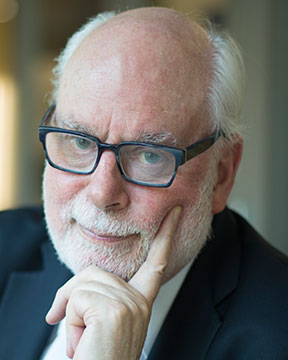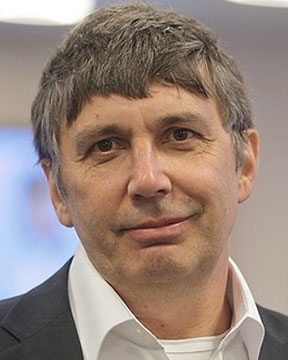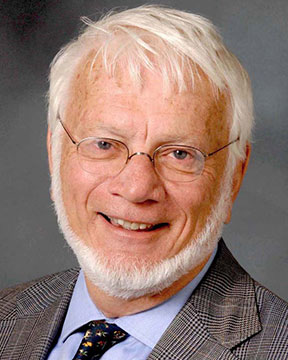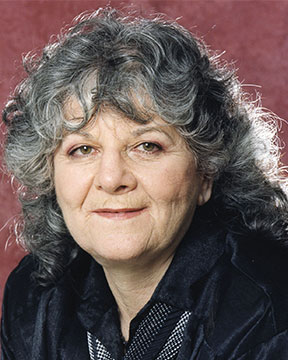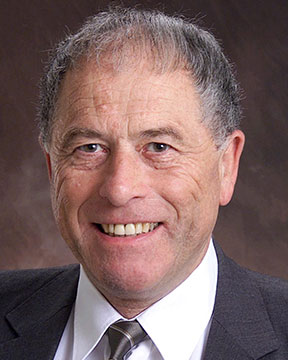ORALS
SESSION: ElectrochemistryMonAM-R2
| Amatore International Symposium on Electrochemistry for Sustainable Development |
| Mon Nov, 5 2018 / Room: Copacabana B (150/1st) | |
| Session Chairs: Emmanuel Mousset; Session Monitor: TBA |
11:20: [ElectrochemistryMonAM01] Plenary
A Combined SERS-DFT Study Towards Deep Understanding Electrocatalysis Zhongqun
Tian1 ; Yi-fan
Huang
2 ;
Christian
Amatore3 ; An
Wang
2 ; De-yin
Wu
2 ; Sandra
Rondinini
4 ;
1Department of Chemistry, Xiamen Uinversity, Xiamen, China;
2Xiamen University, Xiamen, China;
3CNRS & PSL, French Academy of Sciences, Paris, France;
4Universita degli Studi di Milano, Milan, Italy;
Paper Id: 277
[Abstract] Surface-enhanced Raman spectroscopy (SERS) is one of the few powerful in-situ electrochemical spectroscopies, since it is highly sensitive on the surface species and almost inert on the species in the bulk of electrolyte. However, in order to comprehensively understand electrocatalysis, EC-SERS has to be correctly understand and consistent with the electrochemistry and theory. Here, we present the EC-SERS study on the electrocatalytic reduction of benzyl chloride on Ag by combing experiments and theoretical calculations.
To identify the electrode surface species, we performed DFT calculations with Raman spectroscopy on the possible reaction intermediates and products. The results show that the Raman spectrum of the negatively charged benzyl-Ag cluster shows similar spectroscopic characters as experimental spectra, which indicates benzyl anion adsorbed Ag electrode is the key intermediate of the electrocatalytic reduction of benzyl chloride on Ag. By applying the same strategy, we also studied the adsorption of benzyl chloride and the possible products.
In light of the reaction pathway roughed out by the consistent EC-SERS observations and DFT simulations on the spectra, the details of the electrocatalysis regarding the binding energy and the activation energy of reactants and intermediates are revealed by electrochemical kinetics calculation combined with DFT calculation. We found that the weakly interaction between distorted benzyl chloride anion and Ag facilitates the dissociation of C-Cl bond and drives the conversion of benzyl chloride. The more detailed discussion will be given.
The combined EC-SERS/DFT investigation provides a key entry for understanding the origin of electro-catalytic activity by consistent experimental observations and theoretical calculations.
References:
[1] A. Wang, Y. F. Huang, U. K. Sur, D. Y. Wu, B. Ren, S. Rondinini, C. Amatore, Z. Q. Tian, J. Am. Chem. Soc. 132(2010)9534-9536.
[2] Y. F. Huang, D. Y. Wu, A. Wang, B. Ren, S. Rondinini, Z. Q. Tian, C. Amatore, J. Am. Chem. Soc. 132(2010)17199-17210.
SESSION: ElectrochemistryWedAM-R2
| Amatore International Symposium on Electrochemistry for Sustainable Development |
| Wed Nov, 7 2018 / Room: Copacabana B (150/1st) | |
| Session Chairs: Meng Tao; Session Monitor: TBA |
11:20: [ElectrochemistryWedAM01]
Cyclic Voltammetry on Nanoelectrode and Nanostructured Electrode Dongping
Zhan1 ;
Zhongqun
Tian2 ;
1Department of Chemistry, Xiamen University, Xiamen, China;
2Department of Chemistry, Xiamen Uinversity, Xiamen, China;
Paper Id: 160
[Abstract] Prof. Christian Amatore is one of the pioneering and most authoritative scientists on ultramicroelectrodes, in both its fundamentals and methodologies. In his honorary symposium, we would like to give a mini-review of our work on nanoelectrodes at Xiamen University, to which many helpful discussions were contributed by our respected old friend, Prof. Amatore. First, we will present a method based on Fick's second law, to further prove the surface diffusion of adsorbates and quantitative measurements of surface diffusion coefficient of Faraday adsorbates on Au or Pt nanoelectrodes. Second, we will present the single molecular enzyme catalysis on the nanoelectrode, including a statistical method to obtain the turnover number of single molecular enzymes. Third, we will present the plasmon-induced voltammetric behavior on the nanostructured Au electrode.
The mobility of adsorptive atoms and molecules on catalyst surfaces is one of the most fundamental issues in solid surface science. It plays a pivotal role in various physiochemical processes, especially in thin-film deposition and heterogeneous catalysis. Quantifying the surface mobility will aid in a more in-depth understanding of the mechanism underlying these processes. Therefore, numerous spectroscopic methods have been developed for measuring surface diffusion coefficients, and many systematic investigations have been performed on solid surfaces in vacuum or atmospheric environment.
However, studying surface mobility on solid surface in liquid environment, especially in electrochemical systems, still faces challenges both in experiment and theory. The reason mainly stems from the fact that most of the techniques adopted for surface diffusion traditionally don't work at solid/liquid interfaces. Moreover, the co-adsorption of the water molecules or electrolyte ions, and the presence of strong electric fields make it extremely complicated at the electrochemical interface. Nevertheless, information on the transport and interaction of atoms or molecules on electrode surfaces is badly needed for gaining insights into many electrochemical interface processes, such as electrodeposition and electrocatalysis. These processes are directly related to electrochemical energy conversion, metal electrode processes, as well as other electrocatalytic domains.
References:
[1] W. Wang, J. Zhang, F. Wang, B.-W. Mao, D. Zhan, Z.-Q. Tian, Mobility and Reactivity of Oxygen Adspecies on Platinum Surface, J. Am. Chem. Soc. 2016, 138, 9057-9060.
[2] D. Zhan, J.Velmurugan, M. V. Mirkin, Adsorption/Desorption of Hydrogen on Pt Nanoelectrodes: Evidence of Surface Diffusion and Spillover. J Am Chem Soc 2009, 131 (41), 14756-14760.
[3] L. Han, W. Wang, J. Nsabimana, J.-W. Yan, B. Ren, Dongping Zhan, Single molecular catalysis of a redox enzyme on nanoelectrodes, Faraday Discuss., 2016, 193, 133-139.
[4] D. Huang, Q. He, J.-J. Shan, M. Sartin, R. Pang, F.-Z. Yang, Y. Zhou, B. Ren, Z.-Q. Tian, D. Zhan, Illuminating nanostructured gold electrode: surface plasmon or electron ejection? Faraday Discuss. 2018, DOI: 10.1039/C8FD00012C



